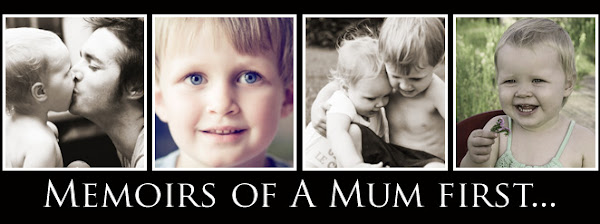Yesterday I went along to the third instalment of the Triple P Parenting Program. I have to say, I did find this session probably the most useful to date. It dealt with ‘managing misbehaviour’.
I guess the main theme of the session was that children learn self-control when their parents use consequences for misbehaviour immediately, consistently and decisively.
We discussed seven strategies for managing children’s behaviour and these included:
• Establishing clear ground rules ie. some established house rules. These house rules should be:
- fair
- few in number
- easy to follow
- enforceable
- positively stated (ie. should tell children what to do, rather than what not to do like “walk in the house” instead of “don’t run”)
• Using directed discussion to deal with occasional rule breaking – This involves gaining your child’s attention, telling the child the problem, explaining briefly why it is a problem and describing or getting your child to suggest the correct behaviour and then practising the correct behaviour.
• Using planned ignoring to deal with problem behaviour - means deliberately pay no attention (don’t look or talk) to a child when a minor problem (like whinging, pulling faces or saying rude words) behaviour occurs. Remember to stop ignoring your child when the problem behaviour stops and praise good behaviour.
• Giving clear, calm instructions – this involves:
- Getting close and gaining your child’s attention (move within arm’s length of your child, bend down to their eye level and use their name).
- Tell your child what to do in a calm voice (ask twice if it is not a problem behaviour)
- Give your child time to cooperate (around 5 seconds)
- Praise cooperation
- Repeat your instruction if after 5 seconds the child doesn’t stop doing the behaviour.
- Back up your instructions with a consequence (ie, logical consequence, quiet time or time out)
• Backing up your instructions with logical consequences – best used for mild problem behaviour that doesn’t occur often. Choose a consequence that best fits the situation and remove that activity or toy. Logical consequences work best if they are brief – 5 to 30 minutes. Remember:
- When withdrawing the activity do not debate or argue the point with your child and act as soon as the problem occurs.
- Return the activity when the time is up.
- If the problem happens again after giving the activity back follow up by removing the activity for a longer period or use quiet time.
• Using quiet time to deal with misbehaviour – involves removing your child from the activity in which a problem has occurred and having them sit quietly on the edge of the activity (floor or chair) for a short time (2yr olds, 1 mins; 3 to 5 yr olds, 2 mins; max 5 mins for children aged 5 to 10 yrs). Remember not to give your child any attention. Once your child has remained quiet for the set time, they can rejoin the activity. When misbehaviour occurs, follow these steps:
- Tell your child what to do and if the problem behaviour stops praise your child – remember to act quickly!
- Back up your instruction with quiet time – be calm and firm; ignore any protests and do not lecture, argue or nag.
- Remind your child of the rules when putting them in quiet time. Tell them they can rejoin the activity when they have been in quiet time for a set time.
- After quiet time is over do not mention the incident.
• Using time-out (placing child in another 'boring/safe' room) to deal with serious misbehaviour or when quiet time doesn’t work. When serious misbehaviour occurs, follow these steps:
- Tell your child what to do and remember to act quickly when you see a problem occurring. Praise your child if they do as you ask.
- Back up your instruction with time out if the child does not stop doing the misbehaviour within 5 seconds and remember to tell them what they have done wrong; ignore any protests and do not lecture, argue or nag.
- Remind your child of the rules when putting them in time out. Tell them they can rejoin the activity when they have been in time out for a set time. Also, leave the door open to begin with although you may need to close it if your child doesn’t stay in the room and if that doesn't work you can always try locking the door
- Ignore misbehaviour in time out – do not talk to your child or give them any attention until they have been quiet for the set time.
- After time out is over do not talk about the incident again.
As you can see there was a lot of information pumped into our heads. We (Trevor and I) are planning on following the above strategies but first I will have to get Trevor on the same planet or it just won’t work. Most of what I learnt made sense and I had heard it before (mostly on Super Nanny - although there were some subtle differences).
Before I go, I just wanted to note I received my new digital camera the other day and it is so excellent (how exciting)!!! Here is a picture of Byron taken yesterday (excuse the milo and wind burn and don't you just love his new haircut )...
Thursday, August 03, 2006
Managing Misbehaviour
Posted by
Nicole
at
9:04:00 PM
![]()
Subscribe to:
Post Comments (Atom)





No comments:
Post a Comment